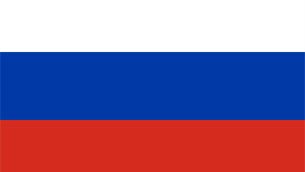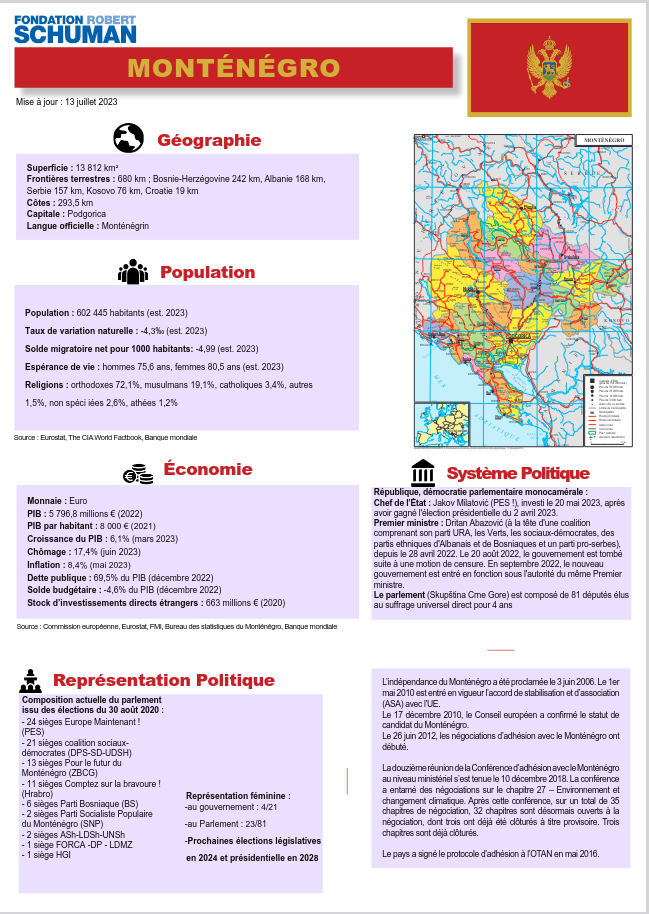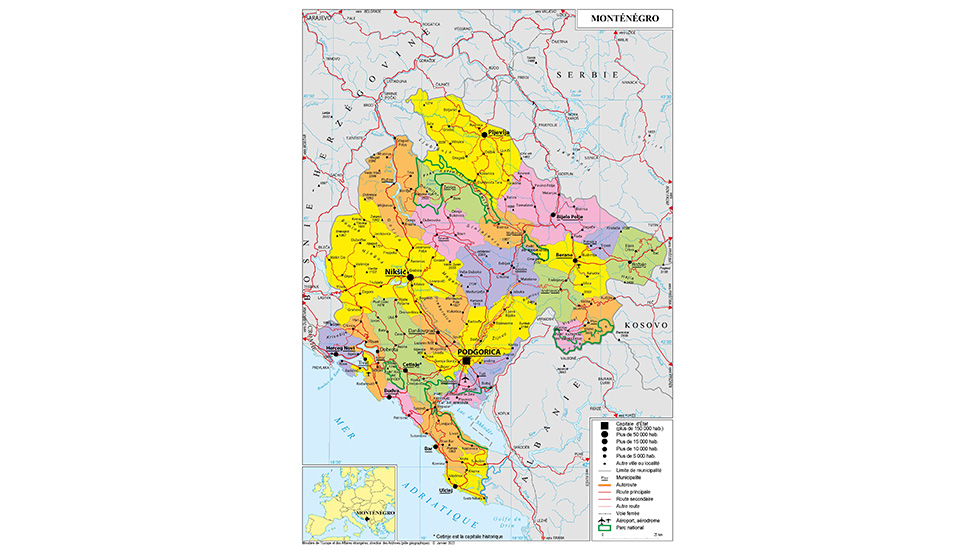
Geography
Area : 3,812 km²
Borders : 680 km (Albania 186 km, Bosnia and Herzegovina 242 km, Croatia 19 km, Kosovo 76 km, Serbia 157 km)
Coastline : 294 km (Adriatic Sea)
Capital : Podgorica
Official language : Montenegrin
Flag
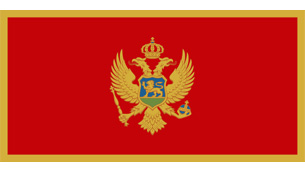
Population
Population : 599,849 (2024)
Crude natural change rate : -0.44‰ inhabitants (2024)
Population repartition: 17.7% under 15, 17.9% over 65 (2024)
Crude net migration rate: -5‰ (2024)
First time asylum applicants: 145 (2023)
Life expectancy: men 75.8, women 80.7 (2024)
Religions: Orthodox 71.1%, Muslim 19.99%, Catholic 3.27%, Atheist 2.29%, Undeclared 2.10% (2024)
Ethnic groups: Montenegrins 41.12%, Serbs 32.93%, Bosnians 9.45%, Albanians 4.97%, Russians 2.06%, Muslims 1.63%, undeclared 2.88% (2024)
Source : Eurostat, World Bank, The CIA World Factbook, Mostat
Economy
Currency: Euro
GDP: €7,459.2 million (2024)
GDP per capita (PPS): €11,960 (2024)
GDP growth : 3% (2024)
Inflation: 3.9% (May 2025)
Public debt: 61.5% of GDP (December 2023)
Unemployment: 9.91% (April 2025)
Stock of foreign direct investment from the entire world: 13.1% of GDP (2022)
Budget balance: 0.76% of GDP (2023)
Source : European Commission, Eurostat, IMF, Statistical Office of Montenegro, World Bank, Trading Economics
Political system
Republic, monocameral parliamentary democracy
Head of State Jakov Milatović (PES !) since 20th May 2023, after winning the presidential election on 2nd April 2023.
Prime Minister Milojko Spajić (President of Europe Now!). He replaced former Prime Minister Dritan Abazović on 31 October 2022, following a motion of no confidence in the government. The Parliament (Skupština Crne Gore) comprises 81 deputies elected via direct universal suffrage for four years.
The Parliament (Skupština Crne Gore) Composed by 81 deputies elected via direct universal suffrage for four years.
Political representation
Composition of parliament (since October 2023) :
- 20 seats PES (Europe Now Movement)
- 17 seats DPS (Democratic Party of Socialists of Montenegro)
- 13 seats ZBCG (For the Future of Montenegro, populist, pro-Serbian): 9 NDS (New Serbian Democracy) and 4 DNP (Democratic People's Party)
- 7 seats DCG (Democratic Montenegro)
- 6 seats BS (Bosniak Party)
- 4 seats URA (United Reformist Action, social-liberal)
- 3 seats SD (Social Democrats)
- 3 independent seats
- 2 seats SNP-Civis (Socialist People's Party of Montenegro - Citizens' Union, liberal)
- 2 seats ASh-LDSH (Albanian Alternative - Albanian Democratic League)
- 2 seats UDSh - HGI (Democratic Union of Albanians - Croatian Civic Initiative)
- 1 seat Non-affiliated
Relations with the EU
- Montenegro declared independence on 3 June 2006 and applied for EU membership on 15 December 2008. Visa liberalisation was granted on 19 December 2009 and the Stabilisation and Association Agreement (SAA) came into force on 1 May 2010. On 17 December 2010, the European Council granted Montenegro candidate country status, and accession negotiations began on 26 June 2012. The European Commission approved the national economic reform plan in October 2024, freeing up €383 millions for the country. In 2024, the government announced that it planned to join the EU by 2028. A goal that the President of the European Commission, Ursula von der Leyen, said at the en of October 2024 was achievable.
- To date, 33 chapters have been opened for negotiation, three of which have already been provisionally closed. In May 2021, the Council agreed to apply the revised enlargement methodology to the accession negotiations with Montenegro.
- Montenegro also joined the North Atlantic Treaty Organisation (NATO) on 5 June 2017.
Women's representations
- in government: 4/23
- in Parliament: 23/81
Next Elections:
On The Same Theme
Country Sheet
Country Sheet
Country Sheet
Country Sheet
Country Sheet
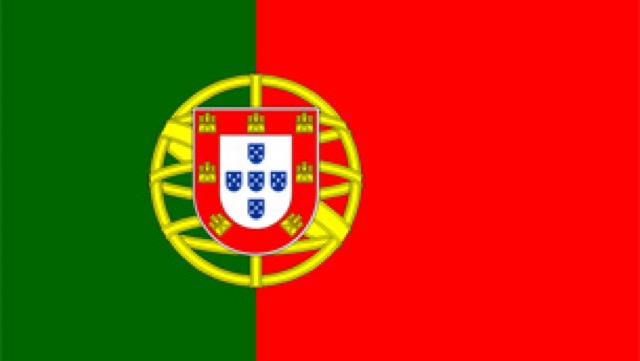
Country Sheet
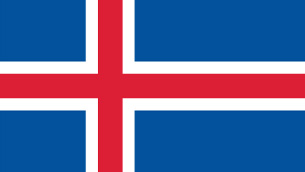
Country Sheet
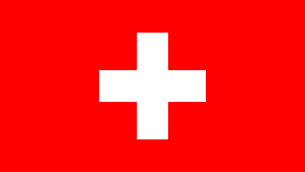
Country Sheet
